Stuart's Stranglers
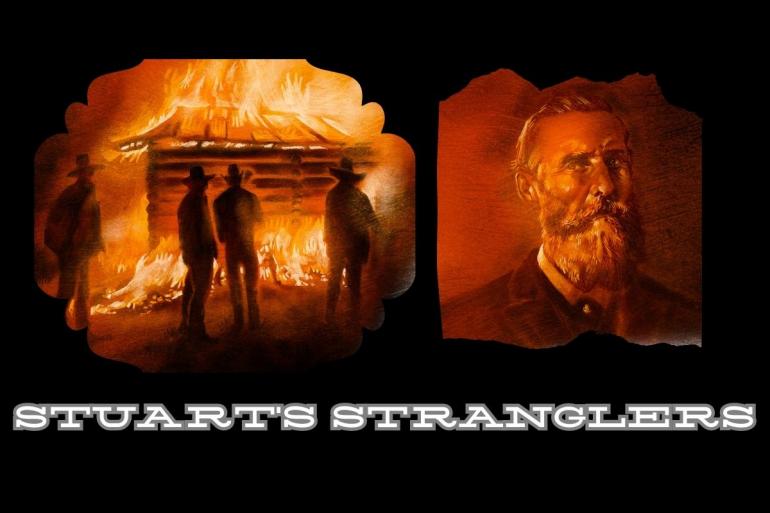
Stringer Jack, real name Jack Stringer, was representative of many of the badmen and rustlers that plied their trade in the waning years of the open range. For one, he used to be a buffalo hunter, but that job had gone the way of so many once lucrative but ultimately obsolete jobs of the frontier, like trapper, tracker, skinner, and before too long, cowboy. Such men, desperate to find work, discovered that their morals, no doubt once strongly held and firm, were irreparably eroded by hardship and want. He turned to horse thievery.
Stringer was "a tall, handsome young fellow, well educated, and of a pleasing personality," sporting "piercing gray eyes, white even teeth, and pleasant smile" during a time in which all of the above were at a premium. No wonder, then, that he soon gathered a coterie of like-minded thieves and criminals around him. Men like Swift Bill, Paddy Ross, Orvil Edwards, and Silas Nickerson—men with nothing to lose except for the chips on their shoulders and their lives, of course.
Stringer Jack, and many more like him, gathered on the Musselshell River, where they struck out as far as the Dakotas to gather and trade in ill-begotten horse flesh.
There were plenty who had reason to want the horse thieves taken care of—among them Granville Stuart, cattle baron, politician, and sometime vigilante. Other cattlemen, like the French adventurer and wax-mustachioed rancher Marquis de Morès, also found themselves vexed. A cabal of rich cattlemen met in Helena in 1883 to discuss what was to be done. The wide-open space and lack of law enforcement officers made for ideal livestock-rustling conditions, the men agreed. But they couldn't agree on a solution. At an impasse, they agreed to table the issue until the next year. The next year, they still could not agree on what to do.
Some were in favor of raising an army to clear the territory of rustlers—to engage, in short, in open-range war. Stuart, for his part, argued against that course, saying that the rustlers "were strongly fortified, each of their cabins being a miniature fortress… [each] armed with the most modern weapons and had an abundance of ammunition, and every man of them was a desperado and a dead shot."
Furthermore, he said, the law was on the side of the rustlers, and the vigilantes, if successful, would probably be liable to go on trial for murder.
But Stuart had been crucial during Montana's first brush with semi-official vigilantism when a gang of amateur law enforcers killed and hanged the corrupt Sheriff Plummer and his "Innocents." Stuart was no stranger to the kind of justice meted out at the end of a rope or gun barrel, and his public vote of "no" at the stockgrowers association meeting of 1894 may have been to provide plausible deniability in the bloodbath that was to follow.
Stuart convened a second, less formal meeting at his ranch two months later. There, addressing an audience comprised of a few august cattlemen and their most reliably itchy-fingered gunhands, he outlined what may have been his plan all along: form into small, mobile groups of vigilantes, seek out the known cattle rustlers and horse thieves, and terminate their lives by rope or by lead.
Comparing notes, they agreed on some targets. Hard cases like Sam McKenzie, the half-Cree half-Scotch who claimed to be a wolf hunter but made his living stealing horses in Montana and selling them in Canada, then stealing Canadian horses and selling them back across the border. Concluding that "[u]nfortunately we have no proof that would convict" McKenzie, Stuart nevertheless vowed to "try & arrange matters so that he will steal no more horses." He achieved this, at least, when his riders left McKenzie's corpse dangling from a tree in the heat of an Independence Day afternoon.
Or Billy Downs, trapper, whiskey trader, and married man known to sometimes host rustlers on his ranch. Out of deference to his wife, Stuart's posse did him the service of attempting to warn him away from his life of crime and to choose a peaceful life with his wife. In the end, it did no good, and Billy Downs (along with cohort California Eddie) was dragged to a small grove and hung while his wife, watching, begged them for mercy and, receiving none, screamed. Her husband and California Eddie were killed on July 7th, just three days after McKenzie.
The cattleman's "Vigilance Committee," known even at the time by its more gruesome nickname, "Stuart's Stranglers," had their most violent brush with alleged rustlers a week later when they surrounded a woodyard owned by Old Man James and frequented by Stringer Jack. There were eleven presumed thieves on the property, including Old Man James and his two sons, a man named Bill Williams in a cabin, and six other men, including Stringer Jack, Orvil Edwards, Silas Nickerson, and Dixie Burr. Burr happened to be Granville Stuart's nephew, but Stuart resolved not to let that get in the way of justice.
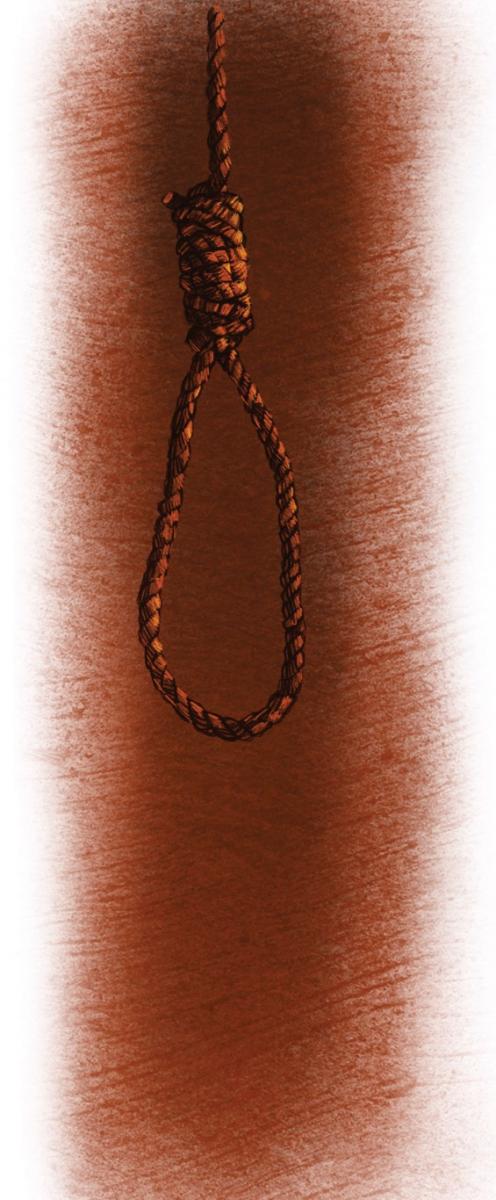 Early in the morning, Old Man James left the tent and found himself in the sights of three vigilantes. They ordered him to go to the corral and let the horses out. He complied but didn't surrender, instead retreating back into the cabin, where he had just enough time to tell his sons they were under attack. A volley erupted from the cabin's makeshift gun ports. The Battle of Bate's Point, as it would later be known, began.
Early in the morning, Old Man James left the tent and found himself in the sights of three vigilantes. They ordered him to go to the corral and let the horses out. He complied but didn't surrender, instead retreating back into the cabin, where he had just enough time to tell his sons they were under attack. A volley erupted from the cabin's makeshift gun ports. The Battle of Bate's Point, as it would later be known, began.
Both sides sought cover and exchanged fire. Two of the Stranglers, carrying torches, made it onto the roof of the cabin and set it afire. Black smoke curled into the sky while clouds of pistol and rifle smoke quickly erupted all over the scene.
The tent, positioned in high brush and near the bank of the Musselshell, offered some chance of escape for those inside. A Strangler's bullet struck and shattered the arm of Stuart's nephew Dixie Burr as he crawled out of the tent, but Nickerson and Edwards managed to escape without a scratch. Burr crawled into a dried-up well, gritted his teeth, and tried to keep from producing any audible moans of pain long enough to escape under cover of night.
The cabin, however, offered no means of escape. The flames rising and beginning to lick at the walls, the men inside continued firing at the vigilantes through port holes cut in the walls and door. It got hotter and hotter. Smoke got in their eyes. Before long, bullets would have been a mercy. As Stuart related in his autobiography, the alleged rustlers holed up in the house "kept up the fight until they were all killed or burned up."
"The cabin," he would write, "burned to the ground."
Stringer Jack, less lucky than some of his cohorts, escaped the tent but only got as far as a thick tussock of willows, where he fought them off as long as he could - which wasn't long.
Of all the alleged rustlers at Old Man James's woodyard, only Paddy Rose would escape with his life. The Stranglers caught up to the rest within hours, hanging Nickerson, Edwards, and Swift Bill from a log suspended between two cabins before razing the cabins, thieves and all.
The general public's reaction was split between apparent admiration and horror at the killing spree. Many law enforcement officers across the country condemned Stuart's cavalier attitude toward due process, but just as many praised the same.
A cattleman named James Fergus wrote to Conrad Kohrs that, in his opinion, no one had "did a braver, nobler, or more necessary act or one that paid better in its results." And though Fergus, another rich cattleman, had not personally rode with the Stranglers, he was proud that his son, Andrew, had.
Nevertheless, rumors persisted that not everyone killed was really a rustler—that some were simple homesteaders whose plots stood in the way of the cattlemen's aims. Perhaps there was a flaw in Stuart's assumption that everyone camping or living on the Musselshell River was automatically guilty.
Rufus Zogbaum, journalist and artist for Harper's Magazine, happened to be traveling by riverboat along the Musselshell and was able to sight the results of the Battle of Bate's Point from the deck of the ship: the charred remains of a small house, a dead dog, a dead mule, and a posse of Stranglers.
Zogbaum did not avoid a tone of romance when he recorded that the Stranglers present were "standing at their horses' heads waist-deep in the weeds and wild flowers, bronzed-faced, resolute-looking men, unconsciously picturesque in costume and attitude; bright barrelled Winchesters swung across their high-pommelled saddles, on which is bound the scanty baggage of the cow boy."
But there, suspended in the branches of a tree, was a hanging corpse that Zogbaum tastefully describes as "something indistinct, but fearfull in its mystery and silence..."
Could it have been the once-charming, well-educated, strikingly grey-eyed Stringer Jack? Or, God forbid, was it someone else, perhaps even an unlucky soul in the wrong place at the wrong time?
Although Stuart would claim in his autobiography that his actions in 1894 had put a stop to cattle rustling in the area for decades, a letter he penned one year later to Bill Cantrell—one of the chief stranglers—seems to tell a different story:
"The stealing is as bad as ever this summer..." But, optimistic to the last, Stuart added, "I think we will fetch 'em yet."

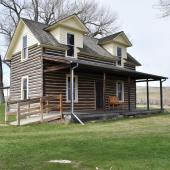
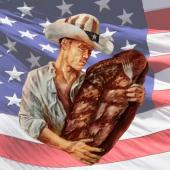

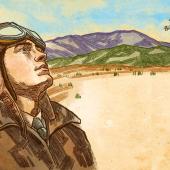
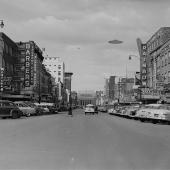


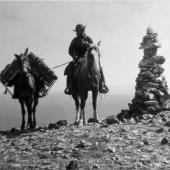
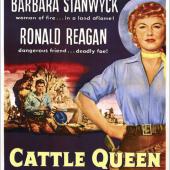

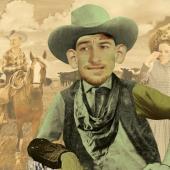

- Reply
Permalink